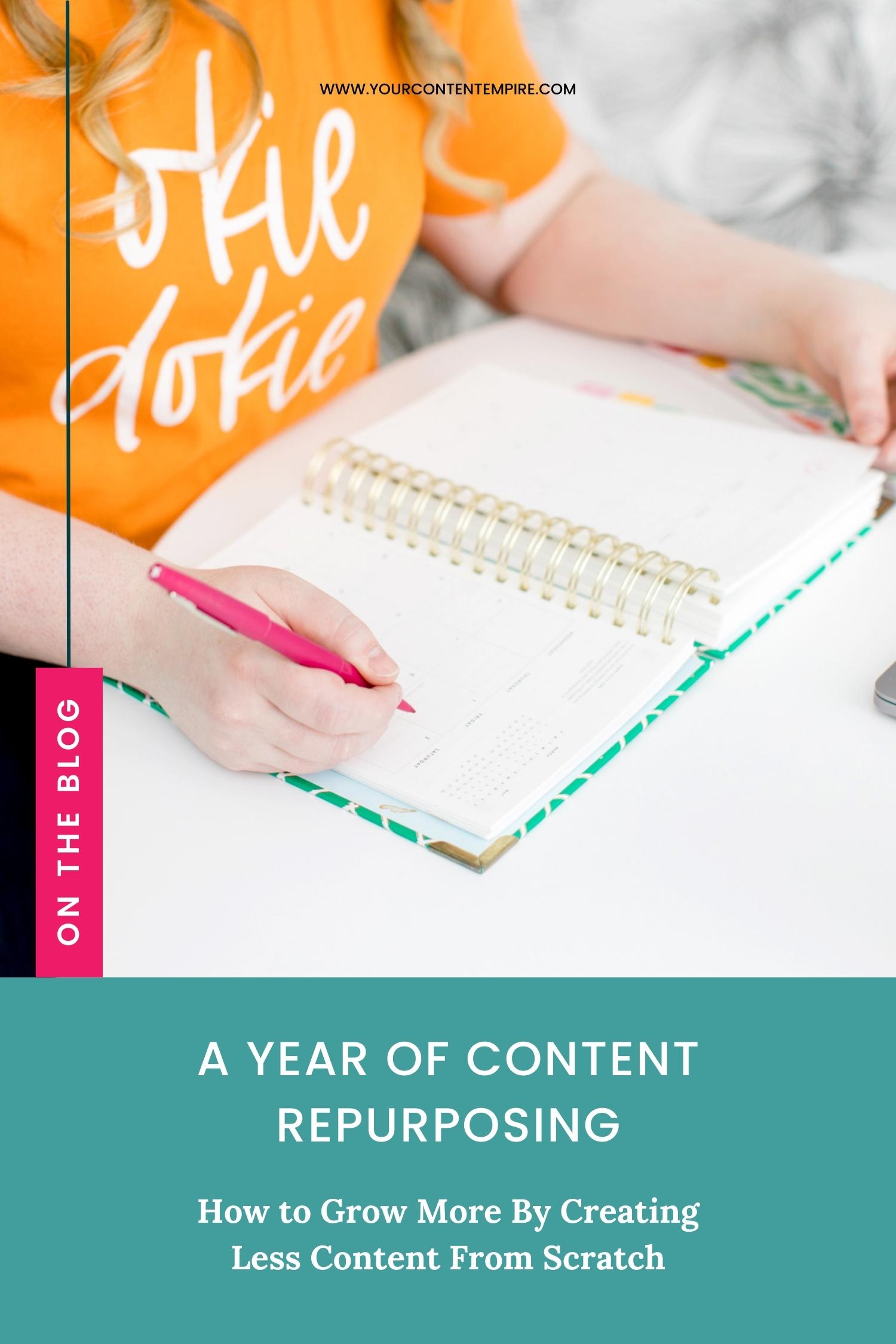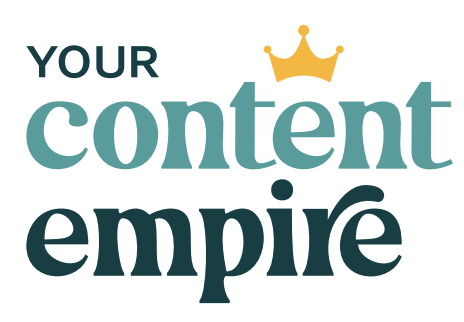What are all things you'd do to grow your business if you knew your content was already handled? You could focus more on networking and collaborations or creating paid ads, or you could shift your focus onto personal outreach or creating an optimized and scalable new sales system.
It’s a myth that you always need a new piece of content.
Here’s the thing:
- You shouldn't always have something new to say (nor do you deserve to feel the constant pressure of doing so).
- People need to read/watch/listen to an idea more than once for it to be helpful—sometimes they need to hear the same message a dozen times before it really sticks.
Prefer to watch instead?
If the idea of going a whole year without creating new content makes you nervous, I’ve been in your shoes.
In 2020, my coach issued me a challenge: No new content for the entire year. I was terrified to stick to it because in the back of my mind, I thought if I didn’t create new content, my business would slowly wither away. In reality, the fear was unwarranted. My business still grew that year, and it actually grew even more than the previous year.
If you want to do more with the content you already have or fully leverage any piece of content you do create by turning it into as many different pieces as possible, you’re in the right place.
In this post, you’re going to learn all about my annual repurposing strategy and action plan.
What is the Annual Repurposing Strategy?
The Annual Repurposing Strategy is a planning method to cover your content calendar for an entire year using content you already have by republishing it, repackaging it, or repromoting it.
Here are 3 main ways to repurpose your core content:
- Reshare an existing post. It really is that simple. Take a great piece of content you already have, like a blog post, and promote it like you would as if it were new again.
- Upgrade and republish an existing post. Just because you’re not creating a fresh piece of content doesn’t mean you can’t upgrade and update the content you already have. Find a post that could use a little finessing or re-tweaking and work your magic on it, then republish it.
- Repackage another piece of content into a blog post. There are so many types of content that can be transformed into a blog relatively easily. Consider creating a blog post from a transcript from a podcast interview you did, or a live video, or a couple of juicy social media posts that can be combined to create 1 blog post
Benefits of the Repurposing Content
If you’re going to step back from creating fresh content, you want to be sure it’s going to be worth it. There are more benefits to content repurposing than you may have realized, which are:
More time.
You won't be tied down with creating content every single week, which means you'll have more time to spend in other areas of your business. Or you can spend this extra time away from your business to focus on the other important areas of your life.
More consistency.
When you repurpose your content in an intentional way, you can become rain-or-shine consistent. You will actually prep and schedule your content way way ahead of time, which means you're showing up consistently. And what does consistency bring? More visibility, momentum, growth, and sales.
More intention.
When you feel the pressure to create new content, you may have found yourself slapping something together just so you have something to publish. But taking a fly-by-the-seat-of-your-pants approach to creating content doesn’t usually result in the best end result. When you step away from publishing from scratch, you can spend even more time in the planning department crafting intentional journeys with your content that lead to your offers.
More growth.
When you have a content repurposing strategy, you get SO much more time to focus on growing your audience while still keeping them nurtured and engaged. Then you can turn around and spend your time collaborating, mastering paid ads, creating new offers and launches, and soaring on social.
Better content.
What’s really great about repurposing your content is that it’s also an opportunity to give your content a (sometimes much-needed) upgrade. Maybe you have something you can add to make it more robust, or perhaps you have new and updated information to add in. This maintains the integrity of your content and ensures that even your earlier pieces are something you’re proud of.
How to Set Up Your Content Repurposing Strategy
When it comes to this kind of strategy, the last thing you want to do is approach it with a “just wing it” attitude. Part of the magic of this strategy comes from the purpose and planning behind it.
Step 1: Create a content bank.
A content bank is a place where you organize one of your most valuable business assets: your content. This ensures you know ALL the assets you have to repurpose. You can create one in Asana, Notion or Trello, but I recommend starting with a spreadsheet (you can grab my template and system here)..
Here are some general steps on how to create a content bank:
- Create a new board or open up a new spreadsheet (or wherever you're going to host it).
- Create separate columns or tabs for types of content: Freebies, Videos, Webinars, Blog Posts, Courses, Email Sequences, Social Media Posts (for those really epic posts or responses that you’d like to pull from in the future).
- If you’re using a spreadsheet, create columns for the different types of information you want to store about each piece content like: URL, topic, folder link, etc.
If you want a deeper dive into creating a content bank, grab my training and template here.
Step 2: Choose a theme for each month.
Each month, think of a theme to centre your content strategy around. You’ll need to decide what offer you're promoting, and then you can dig up the content you already have to support it.
Here are your steps for designing your monthly repurposing content plan:
- For each month, think about what's happening in your personal and professional life so you can plan around it.
- Then for each month decide which one offer you want to focus on selling.
- Then for each offer you need to find the existing content you have that relates to the theme or topic. You can get creative here: You don’t have to only focus on finished blog posts that you can reuse – consider videos, interviews, lives, social, or freebies that can be repackaged too.
Next, let’s map out the rest of your year and what content you'll be sharing each month.
First figure out how many posts you need to cover yourself for the year:
- If you're publishing weekly, you need 52 posts
- If you're publishing biweekly, you’ll need 26 posts.
Just a reminder: You can also use something 2-3 times within the same year too.
Ready to ‘Say Yes’ to a Year of Repurposing?
If you want more time, consistency, intentionality, and growth in your business, try shopping your old content before creating anything new. The best part is that a content repurposing strategy helps you create even better content to provide to your audience.
Start by creating a content bank, and then jump into planning for each month. Then you’re ready to prep and organize your content and schedule it so you can let your repurposed content roll.
Then sign up for THIS free workshop to map out your “capsule content collections” to repurpose your content while still making sales:












